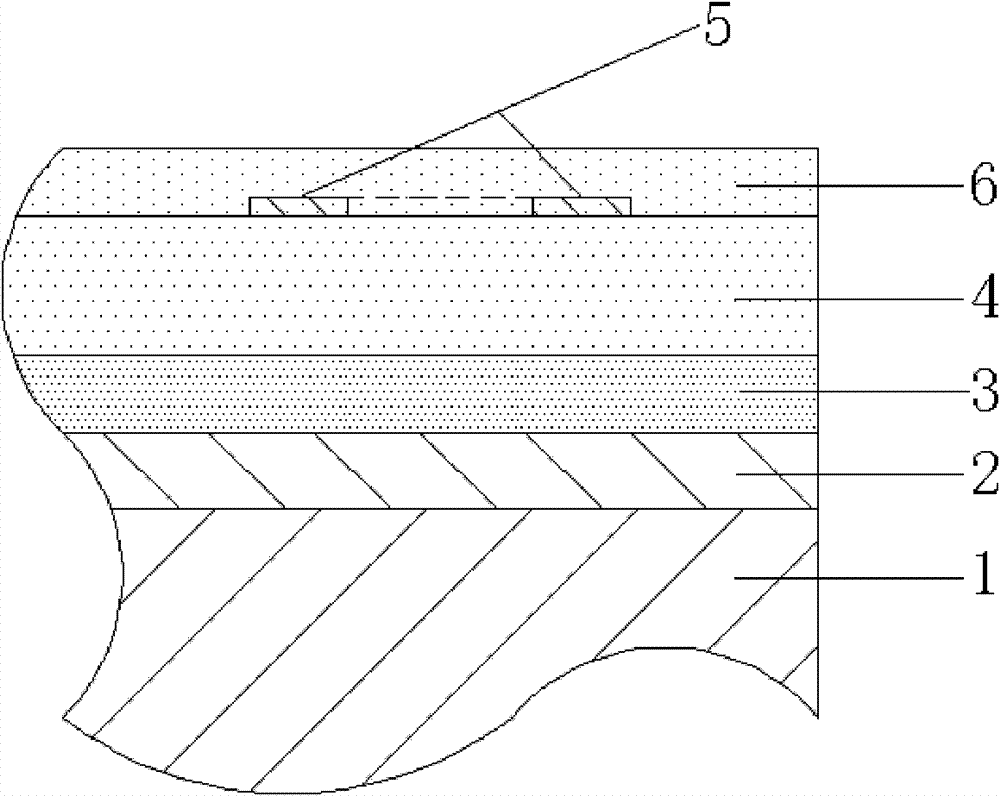Method for arranging film sensor on alloy substrate
A thin-film sensor and composite substrate technology, which is applied in the direction of superimposed layer plating, metal material coating process, coating, etc., can solve the problems of difficult bonding, non-uniform covering surface, non-uniform insulating layer, etc., and achieve improved Effects of joint strength, reduced thickness requirements and difficulty of fabrication
- Summary
- Abstract
- Description
- Claims
- Application Information
AI Technical Summary
Problems solved by technology
Method used
Image
Examples
Embodiment Construction
[0017] Take a nickel (Ni)-based alloy plate as the alloy substrate 1 to be tested, and prepare a K-type NiCr-NiSi thermocouple film sensor on it as an example:
[0018] A. Surface treatment of the alloy substrate: a nickel (Ni)-based alloy plate of (length × width × thickness) 30 × 95 × 5mm is used as the alloy substrate 1 to be tested, and the surface of the alloy substrate to be tested is treated with acetone and ethanol first and then Cleaning, drying under nitrogen atmosphere after cleaning;
[0019] B. Deposit a NiCrAlY alloy transition layer on the alloy substrate: place the cleaned Ni-based alloy substrate 1 in a vacuum of 6.0×10 -4 In a vacuum (back vacuum) environment of pa, NiCrAlY alloy is used as the target material, and argon gas with a purity of 99.999% (volume percentage) is input as the sputtering medium. ) is under the condition of 0.5Pa, the NiCrAlY alloy is deposited on the Ni-based alloy substrate 1 by the DC magnetron sputtering method, and the deposition...
PUM
| Property | Measurement | Unit |
|---|---|---|
| thickness | aaaaa | aaaaa |
| thickness | aaaaa | aaaaa |
| electrical resistance | aaaaa | aaaaa |
Abstract
Description
Claims
Application Information
 Login to View More
Login to View More - R&D
- Intellectual Property
- Life Sciences
- Materials
- Tech Scout
- Unparalleled Data Quality
- Higher Quality Content
- 60% Fewer Hallucinations
Browse by: Latest US Patents, China's latest patents, Technical Efficacy Thesaurus, Application Domain, Technology Topic, Popular Technical Reports.
© 2025 PatSnap. All rights reserved.Legal|Privacy policy|Modern Slavery Act Transparency Statement|Sitemap|About US| Contact US: help@patsnap.com

